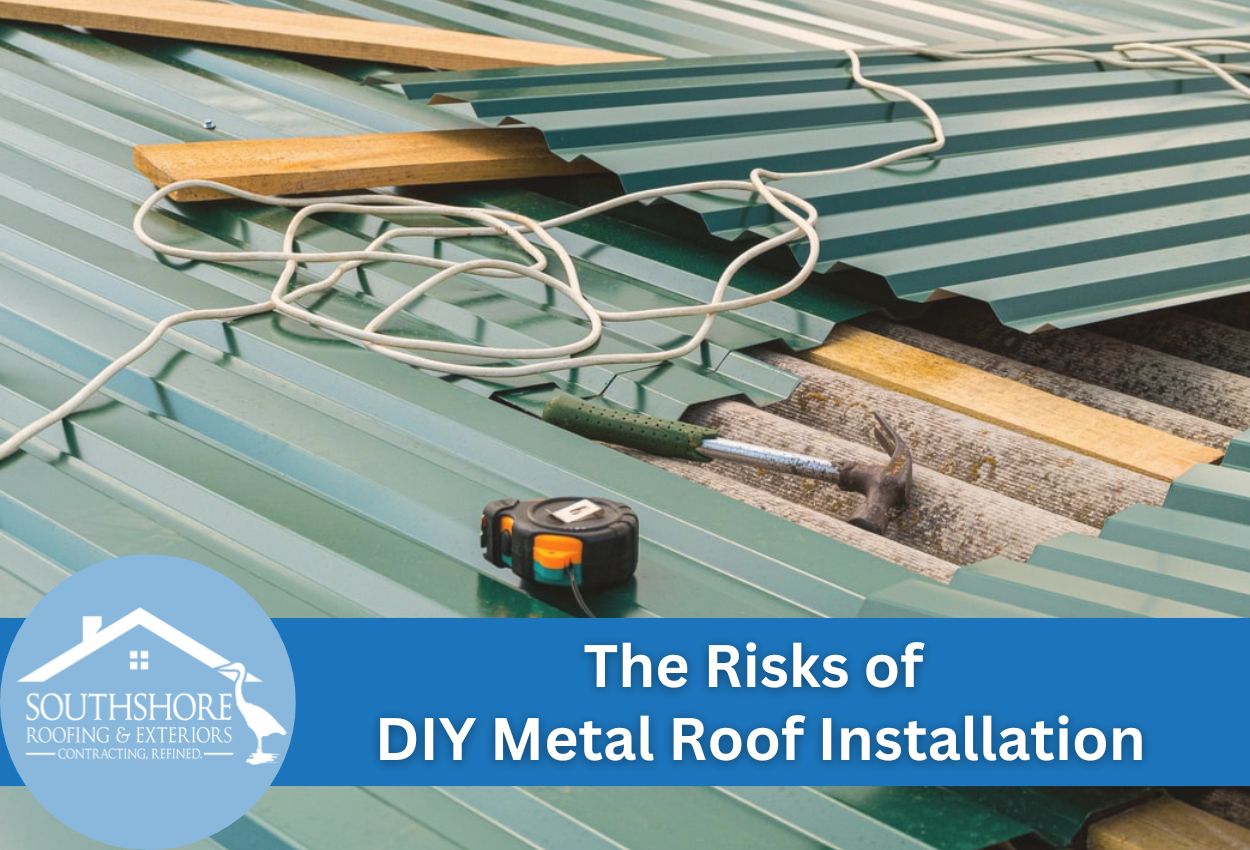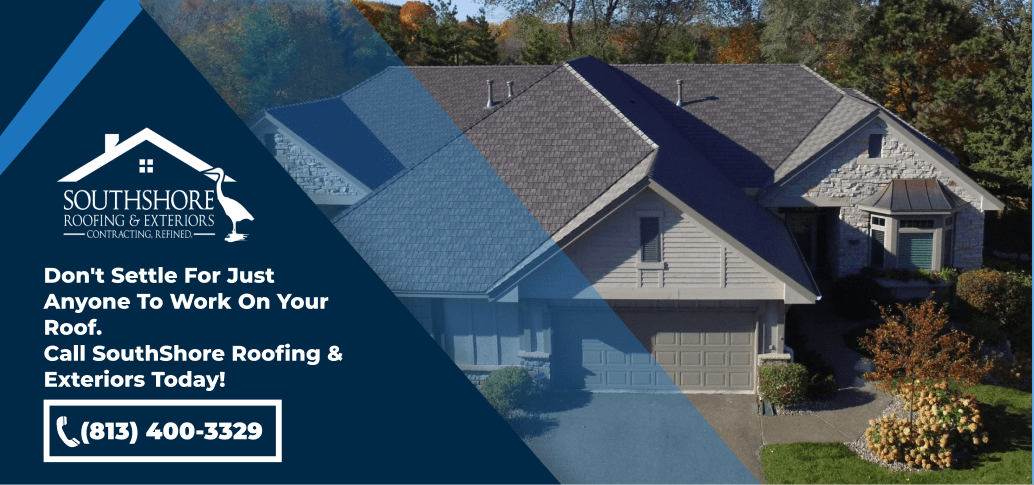Metal roof installation presents serious hazards to homeowners who are attempting to tackle the project without professional expertise. According to the National Safety Council, roof-related accidents result in over 500,000 injuries annually, with DIY projects accounting for approximately 30% of these incidents. Metal roofing specifically introduces unique challenges that many Tampa homeowners underestimate when considering a self-installation approach.
Unlike traditional asphalt shingles, metal roofing materials are heavier, harder to handle, and require specialized tools and techniques for proper installation. The combination of working at heights with sharp, heavy materials creates a perfect storm for potential injuries. Beyond personal safety concerns, amateur installation frequently leads to property damage, with improper sealing causing leaks that may remain undetected until significant structural damage has occurred.
If it’s so risky to handle, then why is it so popular? The growing popularity in Florida stems from its durability during hurricane season and energy efficiency in hot climates. However, these benefits only materialize with the correct type of installation. That’s what makes hiring a professional roofing contractor with years of experience your best choice.
If you’re still not convinced, this blog post will outline where things can go wrong during roofing projects that are installed with DIY efforts instead of professional ones.
Safety Hazards at Heights: Fall Risks and Prevention
Working on rooftops is one of the most dangerous activities a homeowner can take on. In Tampa’s residential area, fall-related injuries from DIY roofing projects have increased by 23% over the past five years. OSHA reports that falls remain the leading cause of death in construction, with roofing work being particularly hazardous due to working on slopes and frequently changing weather conditions that create slippery surfaces.
The dangers multiply with metal roof installation as these materials are more slippery than traditional roofing options, especially in Florida’s humid climate. Many homeowners attempt DIY metal roof installation with inadequate safety equipment, typically using standard ladders and basic harnesses purchased from local hardware stores. These consumer-grade safety products pale in comparison to the professional fall protection systems utilized by licensed Tampa roofing contractors.
Professional metal roofing installers employ OSHA-compliant safety harnesses, guardrail systems, safety nets, and specialized roof anchors designed specifically for working on metal roofs. They also receive extensive training on proper tie-off techniques and safe movement across metal surfaces. The difference between amateur and professional safety equipment can literally be life-saving, as professional-grade systems are consistently tested to withstand sudden falls and distribute the force of impact safely while preventing roof damage during installation.
Weather-Related Dangers During Metal Roof Installation
Florida’s unpredictable weather creates numerous hazards that professionals are trained to navigate but can catch homeowners dangerously off-guard. Sudden afternoon thunderstorms can develop rapidly, creating slippery metal surfaces within minutes. During the summer, surface temperatures on metal roofing materials can exceed 150°F, increasing the risk of burns and heat-related illnesses like heat stroke and dehydration.
Wind conditions present another serious threat. Even moderate breezes can transform lightweight metal panels into dangerous projectiles capable of causing severe injuries or property damage. Hurricane season amplifies these risks substantially. Professional roofers closely monitor weather forecasts and understand the specific wind thresholds that make installation unsafe — knowledge that most homeowners simply don’t possess.
Tampa’s professional roofing contractors utilize specialized techniques to reduce weather-related dangers. They schedule installations during the best periods of weather, rapidly deploy methods to secure materials quickly when conditions change, and utilize cooling strategies during extreme heat. Some professional crews even use specialized weather monitoring equipment to detect approaching storms before they become visible.
Physical Injuries Beyond Falls: Handling Metal Roofing Materials
Sharp metal edges, heavy panels, and awkward positioning create many injury risks beyond falling when installing a metal roof. Cuts and lacerations from handling metal sheets are extremely common among DIY installers who lack proper protective equipment. Metal panels with freshly cut edges can slice through skin as easily as a knife, particularly when being maneuvered into tight spaces or during windy conditions.
Back injuries are another major concern during DIY metal roof installation. A standard metal roofing panel can weigh between 50 to 150 pounds depending on material and size, with bundles often exceeding several hundred pounds. Without proper lifting equipment and techniques, homeowners risk herniated discs, muscle strains, and long-term back problems. The awkward angles required when positioning panels on a sloped roof significantly increase these risks.
Professional roofers employ team lifting techniques and body positioning strategies developed through years of experience. Most importantly, they’ve received training on proper material handling to prevent the repetitive strain injuries that frequently plague DIY installers who spend days performing unfamiliar physical movements.
The Risk of Structural Damage from Improper Installation
Beyond personal safety concerns, DIY metal roof installation can seriously impact your home’s structural integrity. When amateur installers fail to properly distribute the weight of metal panels across roof trusses, it creates uneven points of stress that can gradually weaken your home’s framework. This problem becomes particularly dangerous in Tampa’s hurricane season, when distributing the weight of these panels equally is essential for withstanding high winds.
Fastening techniques represent another critical area where DIY installations often fall short. Using incorrect fasteners or improper spacing can lead to panels that lift during storms or loosen over time. Each fastening point must be precisely placed to create a watertight seal while maintaining structural integrity. Professional roofers follow manufacturer specifications that most homeowners aren’t familiar with, using specialized tools calibrated for precise torque settings.
The most problematic type of structural damage that can occur with these panels is installation that occurs with an improper overlap that effectively channels water into the gutters. Metal roofing systems rely on precise panel overlaps and flashing details to direct water away from vulnerable areas. When these portions are installed incorrectly, entry points for water may not become apparent until significant interior damage has occurred.
The Cost of DIY Metal Roofing Mistakes
When comparing expenses between professional metal roof installation and DIY approaches, the financial equation isn’t as straightforward as many Tampa homeowners initially believe. While saving on labor costs might seem attractive at first, the long-term financial implications of amateur roofing mistakes can be substantial. Professional installation typically includes proper material estimation, waste reduction, and efficient completion — factors that DIY installers often miscalculate, leading to excessive material purchases or shortages that delay projects.
Emergency repairs resulting from DIY metal roofing hazards frequently cost 2 to 3 times more than the initial installation would have. Fixing water damage from improper flashing or sealing can quickly escalate the price into five-figure expenses when accounting for structural repairs, mold remediation, and interior restoration. Correcting amateur installation mistakes also often requires complete removal and reinstallation, effectively doubling material costs.
Florida insurance companies have significant concerns about DIY metal roof installations, creating potential complications for Tampa homeowners. Most metal roofing manufacturers explicitly void material warranties when products aren’t installed by certified professionals. Similarly, Florida’s insurance companies have become increasingly strict about roof installation documentation, often rejecting claims related to improperly installed roofing systems. In Tampa’s challenging insurance market, where roof condition already faces intense scrutiny, a DIY metal roof installation can create significant financial vulnerability during hurricane season when protection matters most.
When to Call Tampa Professionals: Making the Right Decision
Recognizing when a metal roofing project exceeds your capabilities is crucial for both safety and successful installation. Most homeowners honestly evaluating their skills will find that metal roof installation presents challenges beyond their experience level. If you lack specialized tools like a seamer, panel benders, and safety equipment specific to metal roofs, this is a clear sign to contact professionals. If you’re also uncertain about proper flashing techniques or how to create watertight seals around roof penetrations, these gaps in knowledge may end up leading to serious problems down the line.
When selecting qualified metal roofing contractors in Tampa, look for specific credentials that demonstrate expertise. Reputable professionals will have manufacturer certifications from major metal roofing brands, which indicate they’ve received specialized training. Ask your potential contractor about their experience with the specific metal roofing system you’re considering and request to see examples of similar completed projects in the Tampa area. Verify they carry proper insurance coverage including workers’ compensation and liability insurance — which is essential protections that DIY installers lack.
Tampa homeowners should also ask about how contractors handle Florida’s unique climate challenges. Quality metal roofing specialists will discuss hurricane-resistant installation methods, proper ventilation systems for our humid environment, and energy-efficient options that reduce cooling costs. By choosing qualified professionals, you avoid serious amateur roofing dangers while ensuring your metal roof delivers its promised longevity and performance benefits.
Expert Metal Roof Installation in Tampa Bay — Avoid DIY Dangers
Don’t risk your safety or home’s durability by attempting a DIY metal roof installation. The potential dangers range from serious falls to improper sealing that leads to water damage, which can all cost far more than professional installation. That’s why our experts at SouthShore Roofing & Exteriors are ready to provide expert metal roofing services throughout Tampa Bay with certified installers who understand Florida’s unique weather challenges.
Our team brings the right equipment, experience, and knowledge to ensure your metal roof is installed correctly the first time — protecting your warranty and insurance coverage. We handle the heavy lifting and technical details so you don’t have to face the physical risks or potential structural damage that comes with amateur installation. Call SouthShore Roofing & Exteriors today at (813) 400-3329 to schedule your free metal roofing consultation and installation quote.




